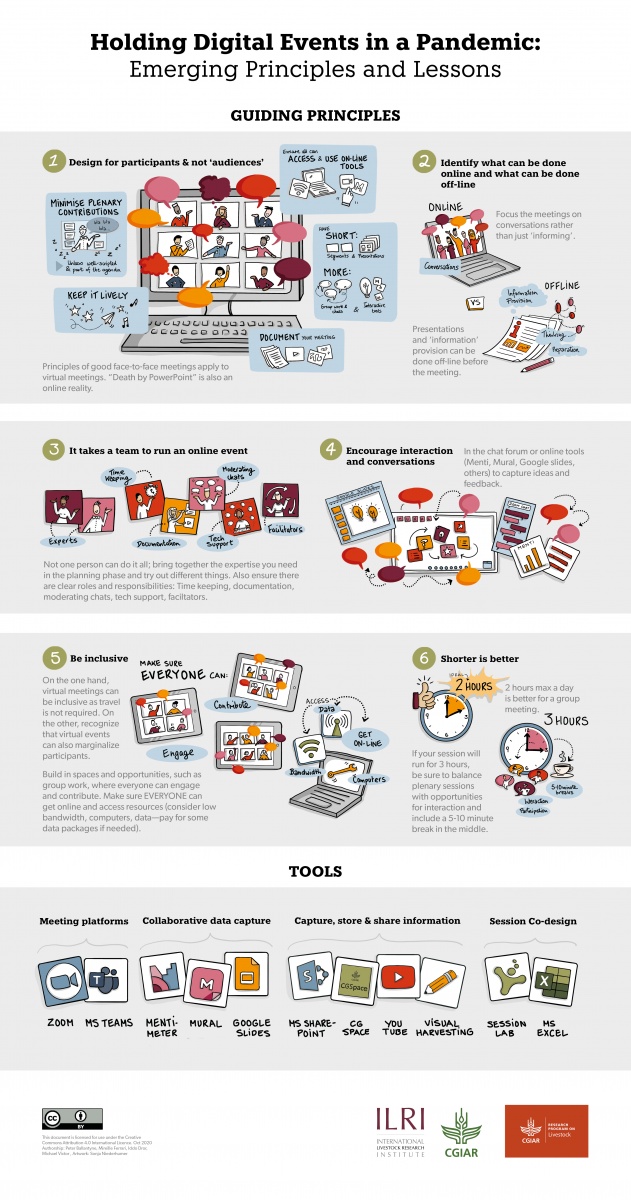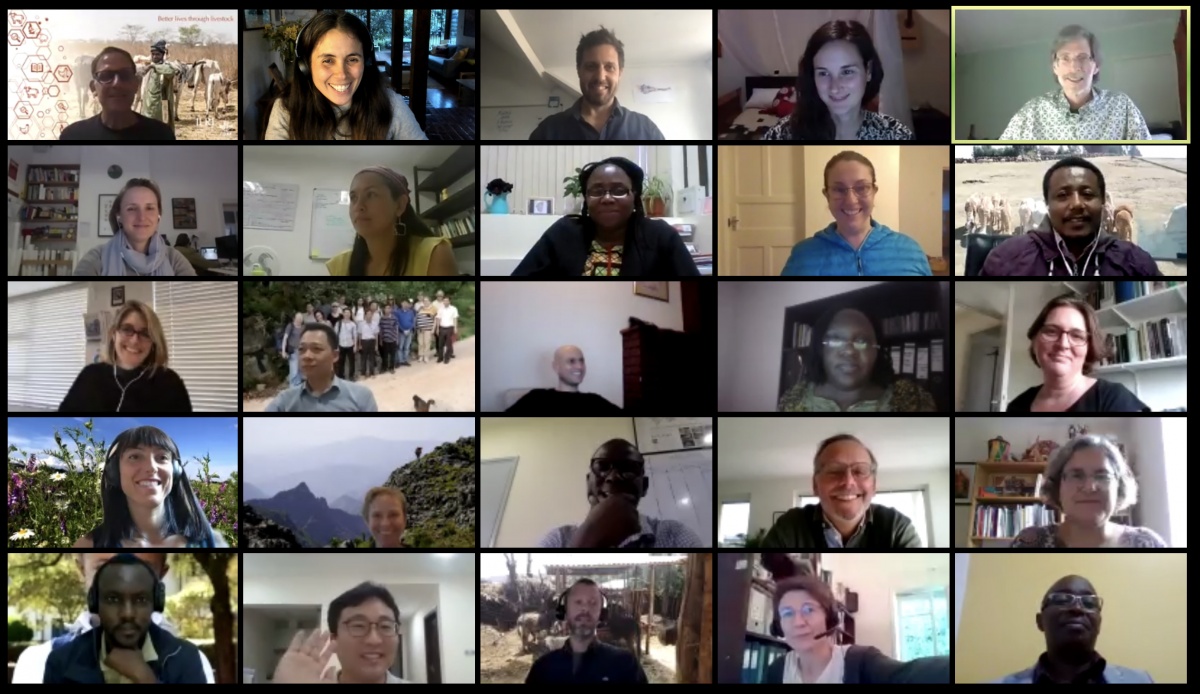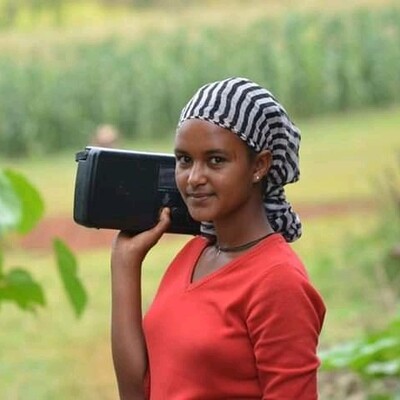
Moving science events online in a lockdown Lessons from the COVID-19 pandemic
Facing pandemic lockdowns, CGIAR scientists have moved many activities online, including the meetings and workshops that drive much research. In this blog post, communicators from the International Livestock Research Institute (ILRI) share insights and lessons they have learned from holding meetings and large-scale events entirely virtually. Eight months on, it is surprising to see how adept we have become at connecting through the airwaves, using tools and techniques to enrich our interactions. It’s not perfect, and while we still miss engaging with our colleagues face to face, the view from behind our screens, it turns out, isn’t so bad after all.
“Necessity is the mother of invention”
Proliferating meetings
Meetings, workshops, conferences and other events are the lifeblood of CGIAR research. Held across the whole organization, they help build teams, formulate projects, engage stakeholders, share information, launch initiatives, review and validate results, draft recommendations, synthesize and harvest lessons, solicit inputs and feedback, coordinate and plan activities, disseminate products and impart skills.
Until the COVID-19 pandemic locked down movement, the default mode for these meetings was face to face, frequent, and traditional (mostly look and listen with much PowerPoint). They were sometimes facilitated, some allowed for remote participation over the web, they often involved travel.
While ILRI had plenty of traditional meetings, it also recognizes that effective meetings and events can make a difference to its performance. For the past 10 years, it encouraged the use of facilitators in meetings, trained staff in facilitation, and generally supported efforts to design and deliver interactive, well-documented meetings and events. These included small interactive writeshops, institute management meetings, institute-wide review meetings, multi-partner interactive ‘share fairs’ and market-places, as well as numerous workshops.
When the lockdown happened, we wanted an online experience that kept these critical success factors and offered additional opportunities to test out some new approaches. Since March, we have been moving to a digital facilitation mode. This required not only learning new tools but rewiring our minds and opening ourselves up to a whole new way of working.
Principles to guide our virtual interactions
No matter whether the interaction is face to face or virtual, we learned that the elements of a successful meeting include: clear objectives, attracts and energizes its participants, has an agenda that mixes information sharing with interaction, invites contributions from everyone, leads to actionable insights from the group, mixes formats, fosters relationships among participants through joint conversations and activities, is well-documented, and provides an inspiring venue and strong logistical support.
In this infographic, we put together the guiding principles and tools that we have adopted to enable us to integrate these elements into our virtual meetings and events. These are not meant to be exhaustive, but rather to help inspire other colleagues and partners to embrace the possibilities of working together virtually.

Download the pdf here
Embracing virtual meetings
After eight months of going ‘digital’, it’s difficult to imagine going back to the same number of face to face meeting we used to have, travelling from one buffet line to the next. In fact, we have found during these exceptional times that doing things digitally can reap some unexpected benefits and outcomes. Some of the examples below highlight the faciltiation challenge and how we have addressed them.
Example 1: ILRI Weekly roundups
Since March, ILRI has been holding institution-wide meetings every Friday on Zoom to share news, receive updates from colleagues, discuss research on COVID-19 and hear from invited leading experts on current issues such as zoonoses. Agendas have varied but some innovations include bringing in external high-level experts to discuss COVID-19; allowing opportunities for staff to share important updates or success stories; and, starting and ending each meeting with inspiring videos of world music or uplifting songs. Provision of data packages to staff who had difficulties accessing from home has also ensured some equity. The weekly meetings are hugely popular, with about 350 colleagues tuning in (out of more than 400 ILRI colleagues). Chat sessions are actively used for comments, questions and friendly banter amongst colleagues. Surprisingly, as an institution, we feel closer than ever.
Example 2: Livestock CRP Annual planning and review meeting
It took two months of intensive planning by a team of four high-level communication and facilitation experts to transform a weeklong face to face interaction to a fully virtual one. Up to 120 scientists and program colleagues met for up to 3 hours daily over a 2-week period, with flagships meeting separately and convening altogether in plenary sessions to focus on programmatic and macro issues. Varied session formats that encouraged active participation led to a successful meeting that reinvigorated program participants and created a renewed collective sense of purpose. Additional engagement was achieved through the use of innovative online tool, Mural, as a virtual share fair platform and an online resource center to document the learning and discovery journey. Pre-event webinars to introduce participants to the new tools ensured better participation. A visual recording artist was also hired to enhance documentation. All the products are publicy accessible on CGSpace.
Box 3: Taking ILRI’s scaling framework digital
The “Impact at Scale” team of ILRI/Livestock CRP developed a framework “scaling better, together”, to make scaling concepts and tools more accessible to researchers and their partners. Designed and launched in a pre-COVID world, the team had to quickly pivot to digital mid-way through its first set of pilot rollouts. Using online collaboration and workshop planning tool, SessionLab, the team transformed the process to a completely digital one, taking into account learner and partner needs/behaviors in the process. Outside facilitators were also brought in to provide new ideas and inspiration for moving to a digital mode. Improvements include project management through smartsheets and automation of partnership check-ins. The new streamlined process is now being delivered faster, cheaper, and in a more inclusive (especially national level participants) and transparent manner than in its originally conceived format.
Reflections
We have found that virtual meetings can be surprisingly efficient. They tend to be more focused and stick to the meeting agenda. There is growing realization that many meetings that used to require travel can be held virtually.
We have seen that online interaction ‘literacy’ or ‘readiness’ has improved. People across the whole institute are increasingly familiar with video conferencing and ways to better facilitate discussion. Likewise, necessity has encouraged many more of us to be more flexible and willing to experiment with new online tools.
On the other hand, however, we have found that there are fewer or no spontaneous exchanges. ‘Water cooler’ moments, side conversations and networking opportunities are mostly lost online. We have yet to find a way to replace the impromptu post-workshop gatherings or afternoon coffee breaks that help us build trust and new relationships.
As a meeting organizer or facilitator, virtual meetings require significantly more effort. Even the shortest online events include expectations that face to face seems not to have, and they require more investment in preparation and planning than people may have done before. Ironically, going digital is driving more demands for good meetings than many years of poor face to face ever did.
While we have found virtual meetings broaden participation (and have a much smaller carbon footprint than flying), new blockages have to be addressed. Inclusion/participation/hidden biases are just as (if not more) pronounced in virtual events. Individual participants may be marginalized. People with poor connectivity or stretched home ‘offices’ can be excluded. Make sure EVERYONE can get online and access resources; build in spaces and opportunities, such as group work, where everyone can contribute; when bandwidth permits, encourage participants to use their video.
In addition, it’s difficult to measure people’s attention and engagement. Social aspects of face-to-face–facial expressions, body language–are harder to detect, especially when videos are off. This is another area where we would be keen to find new solutions.
These are just some of the lessons we have learned, we hope during the CGIAR Big Data Convention on Digital Dynamism for adaptive food systems that this will inspire others to share what they have experienced and learned (register here)
Join us at the at the “Overcoming lock downs: How digital dynamism powers agile, adaptive CGIAR research” Thursday October 22 by registering here: https://us02web.zoom.us/meeting/register/tZcqf-yqrTwpGNUrTIUKvAnlQa4tCH…-


















